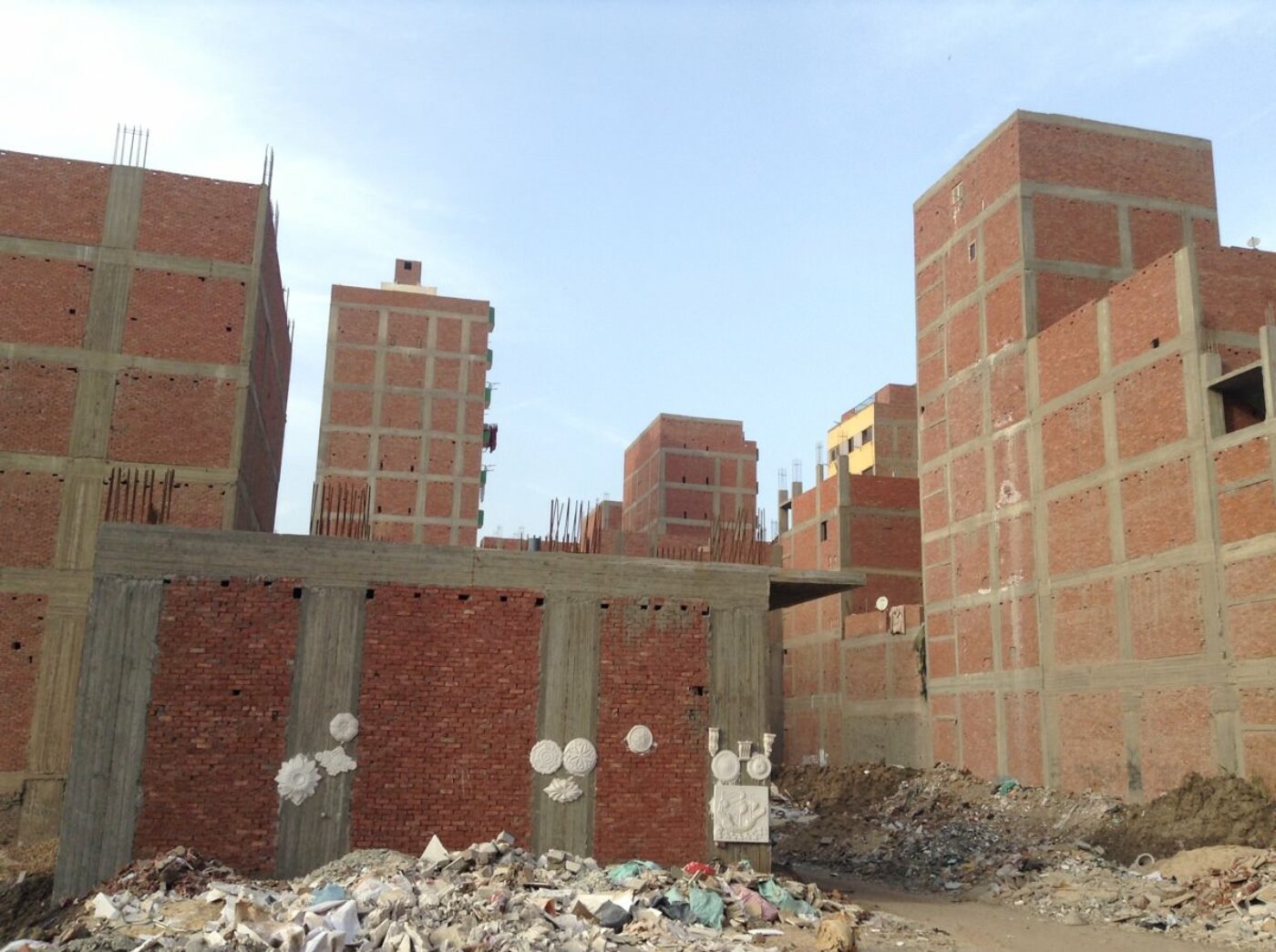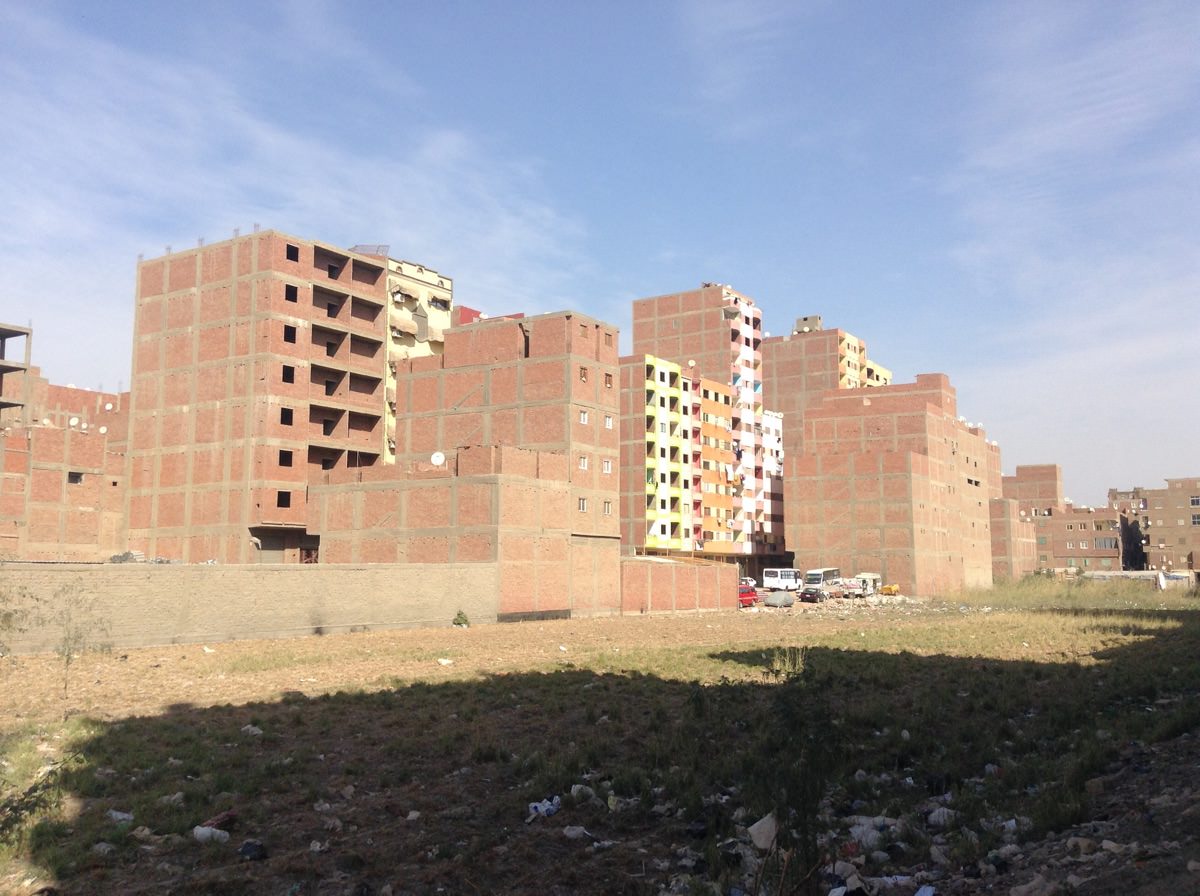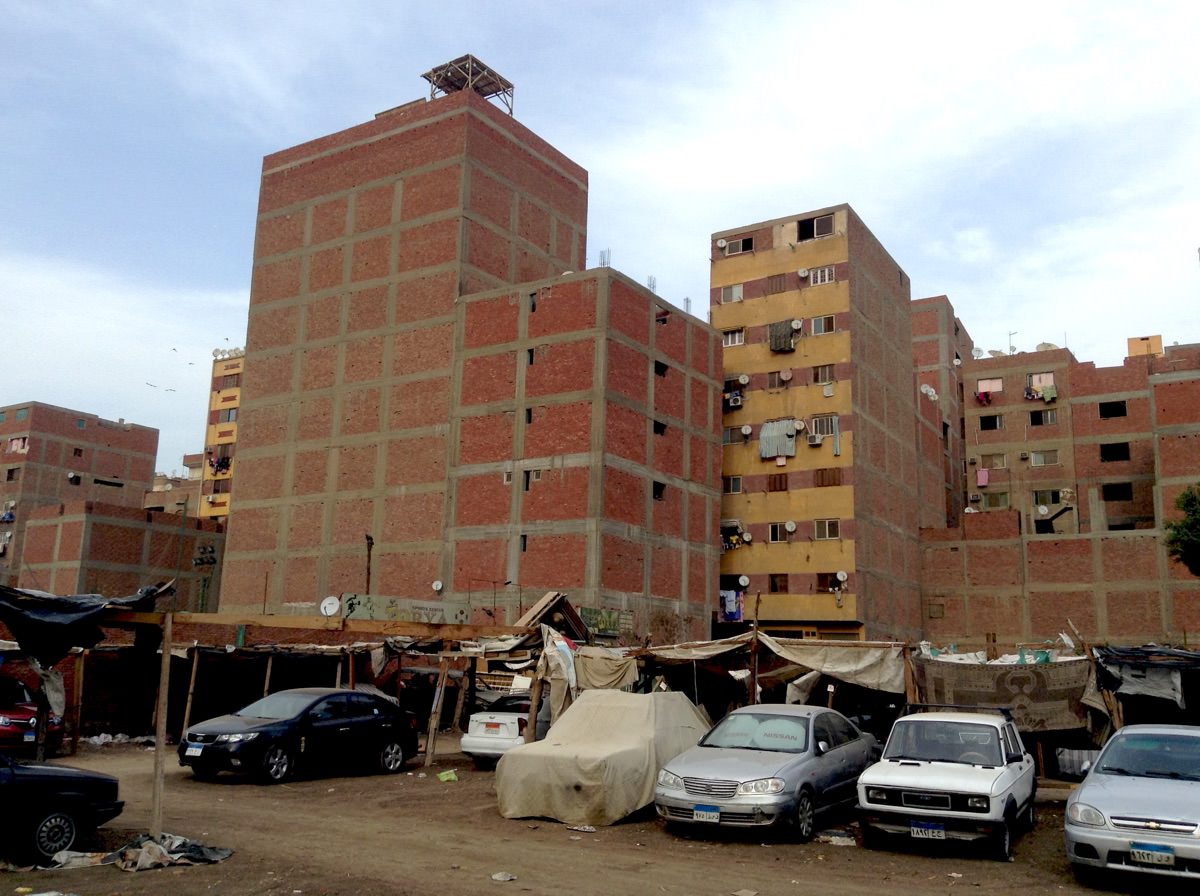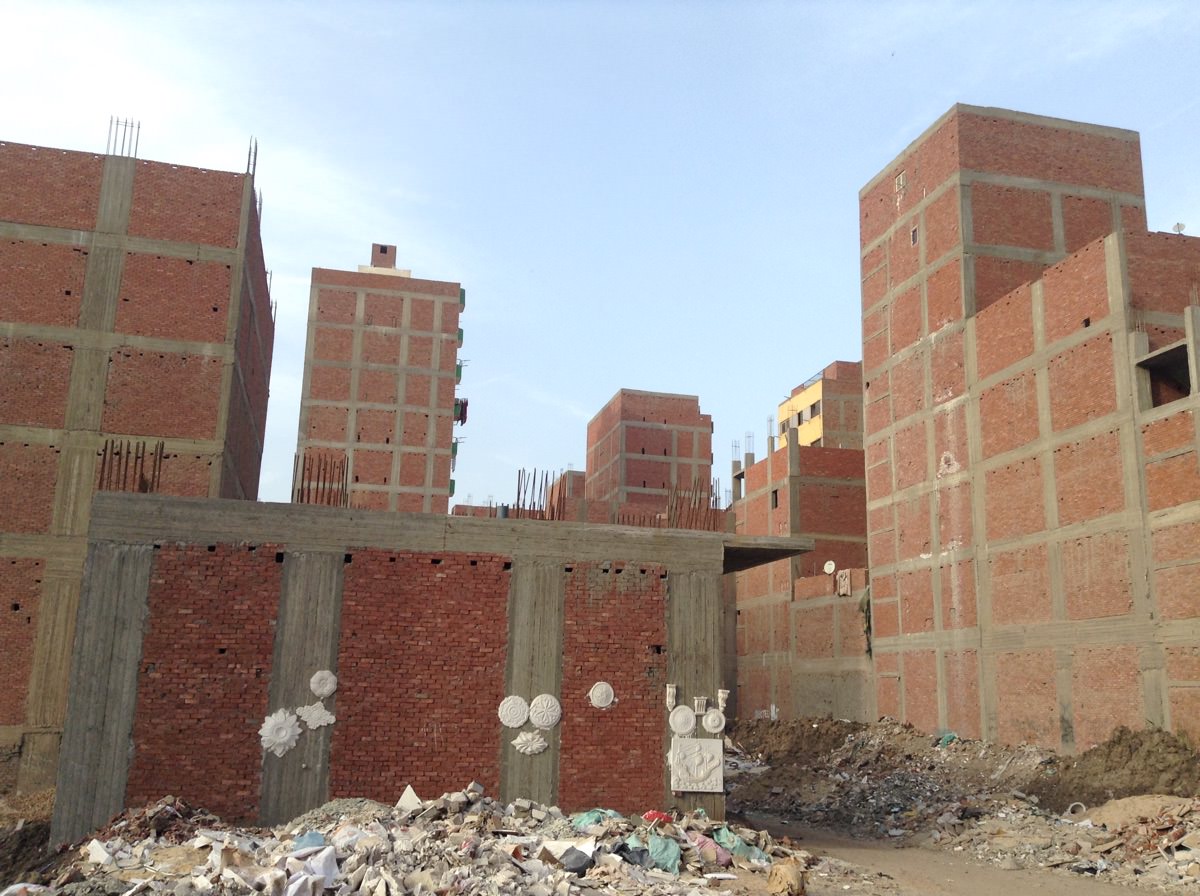
Alongside luxury developments and public displays of wealth, over half of Cairo’s urban population, a megacity of over 17 million, live in unplanned and self-built communities. Massive population shifts and a lack of governmental oversight fostered a culture of collaborative urbanism, incremental architecture and entrepreneurialism. Due to the strong growth created in the power vacuum after the 2011 revolution, the government has formally recognized this informality and services have started being provided. How will these highly nuanced building practices be brought under the remit of planning policy and urban governance? Will they change in the process to produce new forms of urbanism, or will they be accepted and become the new official standard?
With the completion of Cairo’s ring road, the city’s inhabitants were suddenly more often confronted with a phenomenon that had remained largely hidden until then. In particular the elite, increasingly driving luxury cars to outlying gated communities, shopping malls and private universities, had to become accustomed to Cairo’s new appearance. Large parts of the city, it had dawned on many, were turning into an endless urban landscape of concrete frameworks, entirely filled with red bricks. Some halfway to completion, others already partly inhabited, but all of them crammed around narrow streets. As the government had largely ignored the phenomenon over the last few decades, it allowed these unplanned, self-developed neighborhoods to proliferate to an extraordinary scale. Conservative studies estimate that these so-called ashwaiat now house at least 63% of the megacity’s population, which amounts to more than 11 million people.1

Immense and constantly expanding, Cairo’s unplanned neighborhoods have come into existence through a variety of ‘bottom-up’ practices and strategies. As these processes have not been researched thoroughly so far, much remains unclear. It is known, however, that most of the unplanned areas grew out of small agricultural villages surrounding Cairo’s ‘formal’ core. Initially, no building permits were required in these rural areas, which made it possible to develop land without having to go through lengthy planning processes. Besides, farmers were often easily convinced to subdivide and sell their small privately owned plots, which they sometimes developed as well. From the 60s onwards, many of the villages started to expand rapidly, especially as migrants started to arrive in large numbers from all over Egypt. Those without sufficient funds to buy land would sometimes occupy state-owned desert land. This was technically illegal, unlike the arguably more problematic, large-scale urbanization of agricultural land, but in practice the authorities largely ignored both phenomena.
In the early 70s, when the construction of affordable housing by the state ended as most resources were diverted to the army, the planned parts of the city were soon unable to absorb any more people. At the same time, the first remittances from Egyptians working abroad were flowing into Egypt, allowing families to save and invest. Many of them started to construct their own buildings in the informal areas, overseeing the entire project themselves. As they selected the land, consulted with engineers and hired workers, many became ‘informal’ developers. They often realized one or two floors first, making improvements or adding floors when the financial situation would allow it. Many families would become proud owners of multi-story apartment buildings over time, renting out surplus space to other families. Recently, it has been observed that collaborating groups now also construct larger, seven-to-twelve-story apartment blocks at one time. As the buildings are often inhabited by the owners-developers themselves, and as they are considered investments for life, a lot of attention is given to construction standards. Therefore, the ashwaiat resemble in no way the African bidonvilles or the South American favelas. In fact, the social composition of Cairo’s unplanned areas is rather diverse, as they house everything from building owners and scrap collectors to local shopkeepers and public sector workers.

Despite efforts by the government to construct new towns in the desert, most people prefer informal areas because of their affordability and proximity to the center. As people keep moving in and as there are still no urban plans to guide the development of the ashwaiat, these areas continue to expand organically. Buildings typically occupy the entire original plot, resulting in an urban landscape that reflects the historical agricultural patterns. A necessary minimum of narrow streets is realized through informal negotiations between local owners, resulting in dense neighborhoods with limited open space, air circulation or natural light. These mechanisms are largely the same in the various neighborhoods, and their biggest differences are mostly the result of their age. In the newest neighborhoods, logically on the edges of the city, there are still often a lot of vacant plots. Most buildings are unfinished and the area is sparsely populated. Many developers speculate on future developments, and keep their buildings empty on purpose. Older areas, closer to the center, have matured over time and have densified, expanded vertically, and developed a vibrant commercial life and strong social cohesion. It is only a matter of time, however, before the newest neighborhoods will also reach this stage.
Not only have the authorities never developed any plan for the growing informal areas, they have also never really attempted to curb the phenomenon. Although some laws aimed at stopping future growth in the ashwaiat were passed in the 70s, it was not until 1983 that all construction on agricultural land was formally criminalized. In practice, however, the laws were almost never enforced and, instead, initiated a culture of corruption among officials, who took bribes to look the other way. A 1996 military law with similar aims (but featuring severe penalties) proved effective for a while, as it slowed down construction for a few years, although it was later repealed. The scale of developments and the ongoing reluctance of the authorities to seriously intervene has made many owner-developers confident about their security of tenure, despite many buildings defying all existing building regulations. In fact, the government has even provided basic utilities such as sewage and water connections over time, after sustained pressure from international organizations and the local population. Although installation has often been slow, practically all areas are now served.

Since the 2011 revolution, Egypt has gone through a volatile period in which power formations were constantly contested and restructured. This has often resulted into a de facto power vacuum and a lack of government control on the ground, in particular in popular neighborhoods. Throughout the city, owners have taken advantage of the situation, quickly adding floors to their buildings or extending shops or cafés onto the pavement. Construction activities in informal areas have since doubled or even tripled compared to prerevolution levels, according to some estimates.2 However, a recently drafted constitution suddenly acknowledged the existence of the ashwaiat for the first time, urging the government to make improvements where necessary. It remains to be seen if the current status quo, in which informal development by the population and reluctant acceptance by the authorities are in balance, will change anytime soon. And while the postrevolutionary political process stumbles on, life in ashwaiat, from Imbaba to Bulaq, continues as it has done for decades.
References
1. David Sims, Understanding Cairo: The Logic of a City out of Control (Cairo: Cairo University Press, 2012).
2. David Sims, ‘The Arab Housing Paradox’, Cairo Review of Global Affairs (November 24, 2013).
 This article was published in Volume #43, ‘Self-Building City’.
This article was published in Volume #43, ‘Self-Building City’.